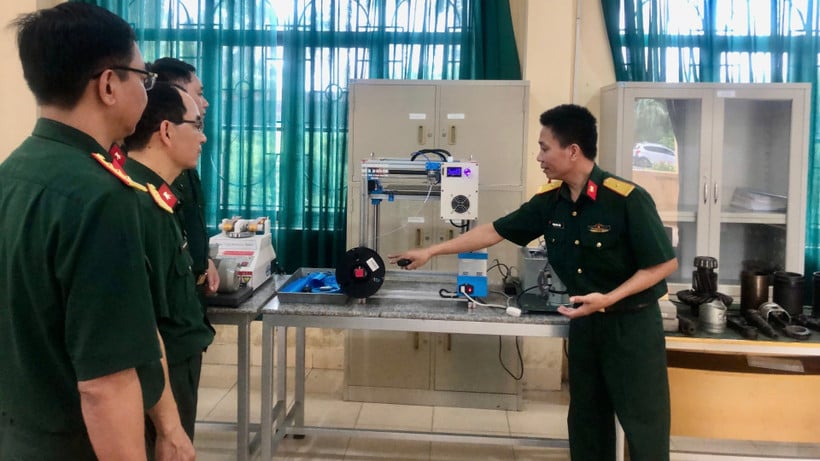
Lesson 1: Strengthening human resource training and health care for soldiers
On December 22, 2024, the Politburo issued Resolution No. 57-NQ/TW on "Breakthrough in science and technology development, innovation and national digital transformation".
This strategic document has created a strong push for military academies, schools and hospitals to accelerate the process of
digital transformation process, improving the quality of training, research and healthcare for military personnel. This has contributed to building a strong logistics-technical human resource that can adapt to new requirements.
The shift from traditional to digital
In the driving training room of Military Technical College 1, dozens of students attentively follow the instructor's instructions.
Each person takes turns entering the simulation cabin, with steering wheel, gear lever, accelerator pedal, brake, clutch and full HD screen. Many traffic situations are recreated digitally , from flat roads to rugged terrain, from dark without lights to fog, or sudden obstacles. All of the student's operations are automatically recorded and analyzed by the system to evaluate the results.
Student Nguyen Manh Cuong, class C military driver, course 108 shared that he used to think learning engineering was very difficult, but with this learning method, he found it easy to understand, easy to remember and can apply immediately.
According to the instructor, Major Do Thanh Tuan, the application of simulation technology has significantly reduced fuel costs and vehicle wear and tear, while ensuring safety in practice. Students are "trained in driving" until they are proficient before going to the training ground.
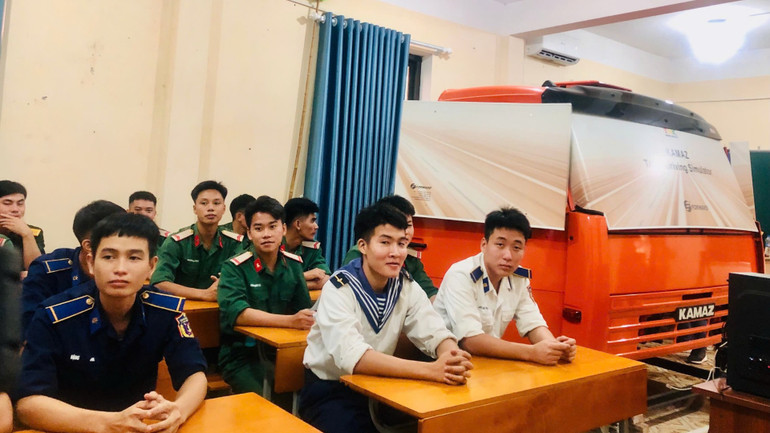
Military Technical College 1 is the army's leading training institution for vehicle and weapon engineering. Over the past 70 years, the school has trained over 180,000 military technical officers and staff.
Implementing Resolution No. 57-NQ/TW of the Politburo and Resolution No. 3488-NQ/QUTW of the Central Military Commission, the Party Committee and the School Board have developed a specific action program, considering digital transformation, science and technology as the key.
Science, technology and innovation are the breakthroughs in the period 2025-2030. From there, the movement of scientific research, initiatives and technical improvements will spread strongly.
Lieutenant Colonel Nguyen Khac Trinh, Head of the Military Science Department, said the school has built a shared data system, digital library, electronic lesson plans, and introduced simulation software for weapons, ammunition, and vehicles into teaching.
“Previously, students only learned about weapons and equipment through drawings and lectures; now they can observe and manipulate them visually using simulation software and movies.
"practical training," said Lieutenant Colonel Nguyen Khac Trinh.
Digital transformation and innovation are being promoted at College of Logistics 1 (General Department of Logistics and Engineering, Ministry of National Defense). In 2025, the school has 3 projects winning the "Creative Youth Award"
in the 25th Army".
Major Phan Van Duy, author of the initiative "Electronic sand table for training, organizing medical support from company level to regimental medical station in defensive combat in mountainous terrain" said: Previously, training was mainly based on theory and paper maps, lacking visuality, so the effectiveness was not good.
limitations. From that reality, he and two colleagues developed an electronic sand table for military medical training, combining modern physical models with software used
digital maps, satellite images and combat simulation scenarios. Thanks to that, combat situations, force deployment plans and military medical assurance tasks are vividly recreated, helping students easily visualize and absorb.
After just under a year, Logistics College 1 has built a digital library with nearly 300 documents, effectively supporting lecturers and students in searching, preparing lectures and studying.
The school also maintains a YouTube channel with training videos (not classified), helping students practice outside of class.
Digital transformation in military schools is creating the foundation for the 4.0 education model, where the classroom is no longer limited to four walls, but is linked to data, technology, and digital interaction. However, this process still has many difficulties and obstacles to overcome.
For example, due to security requirements, students are not allowed to freely use mobile phones or the internet. This somewhat limits learning anytime, anywhere. Infrastructure and equipment in schools have not kept up with the pace of innovation.
From paper records to smart hospitals
On August 28, 2025, Military Hospital 354 - a Grade I general hospital, strategic level of the Ministry of National Defense, announced electronic medical records on the Information Portal.
The Ministry of Health became the pioneer unit of the army to digitize medical records.
In fact, the journey began in 2015, when the hospital began digitizing medical examination and treatment data. Step by step, the HIS (hospital information management), LIS (test information), and PACS (medical image archiving and communication) systems were integrated and operated synchronously, creating the foundation for the birth of electronic medical records.
“Implementing the resolutions of the Politburo, the Central Military Commission and the Party Committee of the General Department of Logistics and Engineering, the Party Committee and the Board of Directors of the hospital have issued a specialized resolution on digital transformation, synchronously deploying many solutions: Installing smart medical kiosks, investing in technology infrastructure, digitizing data, training medical staff, doctors and medical staff”, Colonel, PhD, Dr. Nguyen Quoc Khanh - Deputy Director of the hospital shared.
To date, the hospital has digitized all examination and treatment data and stored it on the server system, connected to the insurance and tax agencies and the VssID and VNeID applications. Patients only need a single identification code to complete the process, without having to wait for a printed prescription or carry paper medical records.
The hospital is also the first military medical unit to deploy five smart kiosks, allowing identification by citizen ID, facial recognition or QR code, supporting online registration, lookup and payment; appointment and prescription are sent directly to the pharmacy counter.
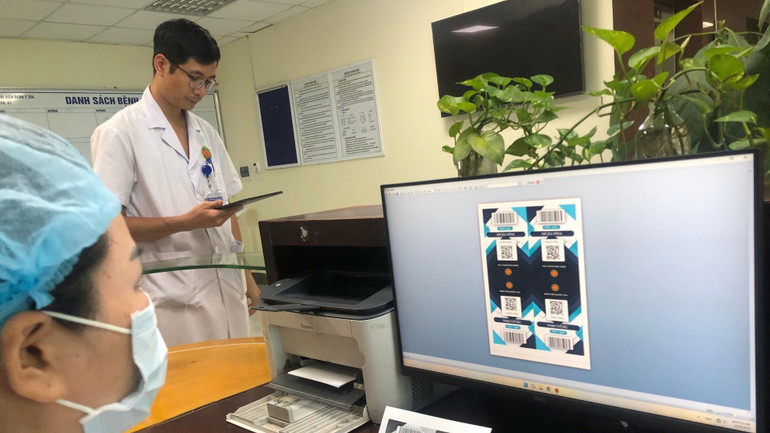
Lieutenant Colonel, Specialist II Doctor Vu Thi Phuong Lien (Examination Department) said that previously, medical records had many papers and were easily lost; now all test results, diagnostic images, prescriptions and treatment history are displayed on the system, helping doctors grasp the whole picture and give accurate treatment regimens.
Colonel, PhD, physician Nguyen Quoc Khanh shared: After one month of implementing electronic medical records, patient waiting time has decreased significantly, and medical staff operations have decreased by up to 50%. However, digital transformation is not only about investing in technology but also about changing mindsets and working methods. The biggest difficulty lies not in technical infrastructure but in changing the habits of medical staff.
The hospital has established a specialized team to deploy, train, and make timely adjustments. According to the plan, by 2027, the hospital will complete its infrastructure, standardize data, expand connections with hospitals inside and outside the military, and move towards a "smart hospital" model.
Report No. 5407 of the General Department of Logistics and Engineering stated that by September 9, 2025, of the 31 military hospitals, 22 units (accounting for 71%) had published electronic medical records on the Ministry of Health Information Portal, the remaining 9 units had completed the records and procedures for publication. The Military Medical Department is deploying electronic health records for soldiers. This is a system that manages all health information from enlistment to discharge, serving the work of monitoring, medical assessment, scientific research and policy resolution.
Professional military Lieutenant Colonel Nguyen Hong Nhanh, Head of the Information Technology Team (Military Medical Department) said that after only two weeks of implementation, the entire army has standardized more than 26% of military health records data, many units have set up specialized teams, significantly shortening the time. Electronic health records allow data connection between military hospitals, health insurance systems and military data, helping commanders to look up and monitor soldiers' health in a more focused and scientific way.
Along with education and training, digital transformation in military medicine is contributing to the formation of a modern military logistics and engineering foundation, moving towards a smart ecosystem in the digital age...
(To be continued)
Source: https://nhandan.vn/xay-dung-he-thong-hau-can-ky-thuat-thong-minh-trong-ky-nguyen-so-post918270.html



![[Photo] National Assembly Chairman Tran Thanh Man receives Chairman of the House of Representatives of Uzbekistan Nuriddin Ismoilov](https://vphoto.vietnam.vn/thumb/1200x675/vietnam/resource/IMAGE/2025/10/27/1761542647910_bnd-2610-jpg.webp)



![[Photo] Party Committees of Central Party agencies summarize the implementation of Resolution No. 18-NQ/TW and the direction of the Party Congress](https://vphoto.vietnam.vn/thumb/1200x675/vietnam/resource/IMAGE/2025/10/27/1761545645968_ndo_br_1-jpg.webp)
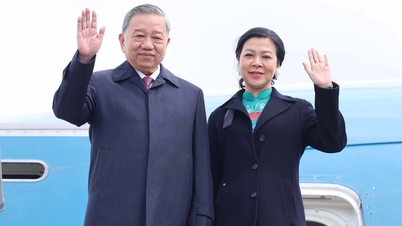



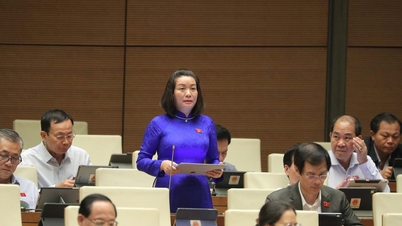

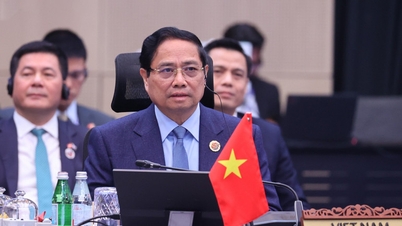






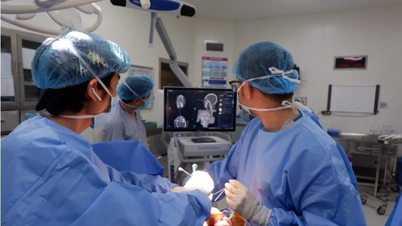
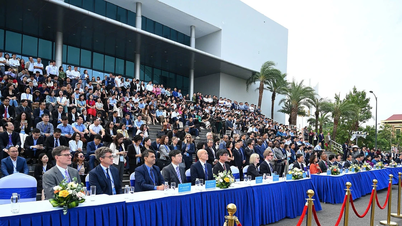
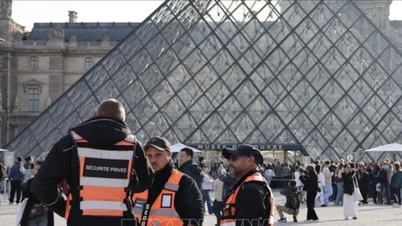
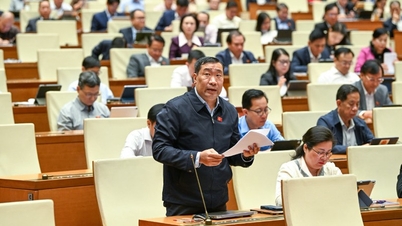
![[Photo] Party Committees of Central Party agencies summarize the implementation of Resolution No. 18-NQ/TW and the direction of the Party Congress](https://vphoto.vietnam.vn/thumb/402x226/vietnam/resource/IMAGE/2025/10/27/1761545645968_ndo_br_1-jpg.webp)

















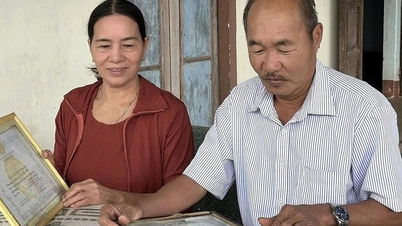




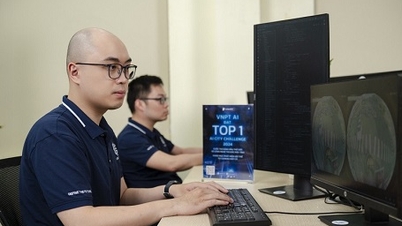



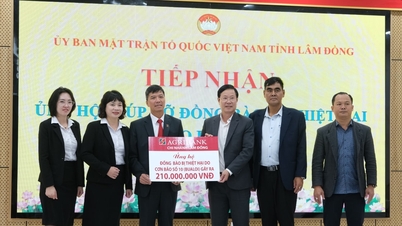


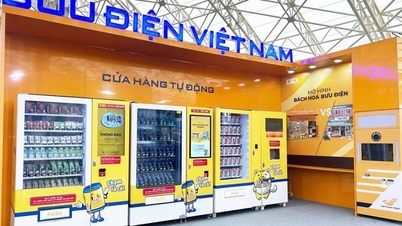








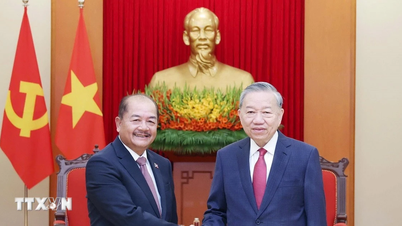

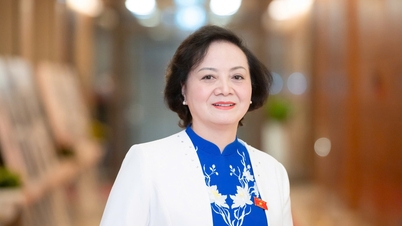

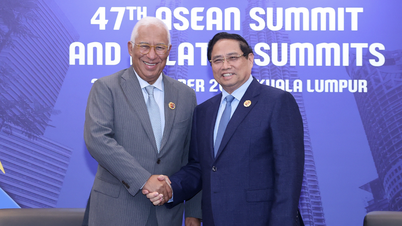
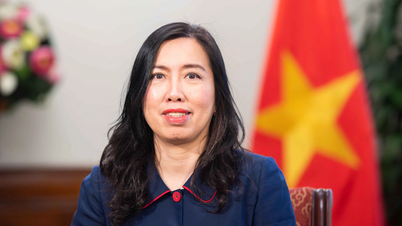
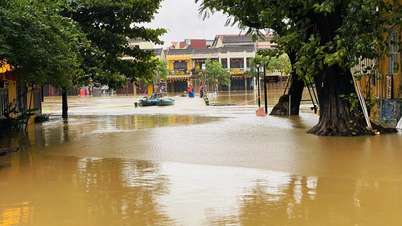
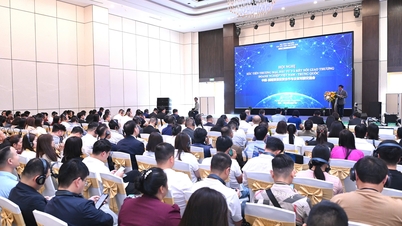

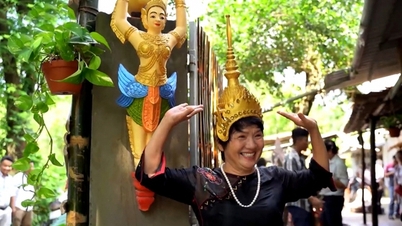



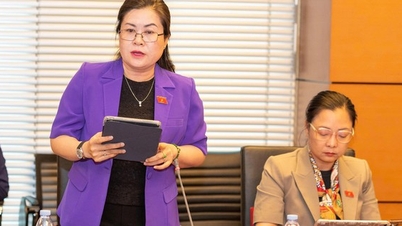


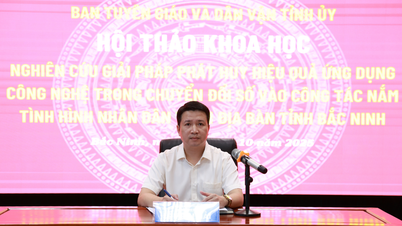

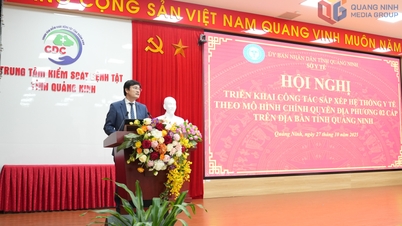

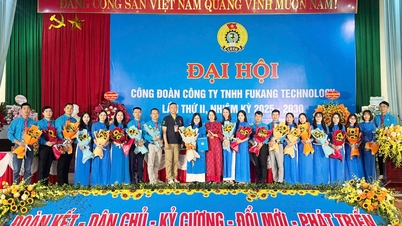

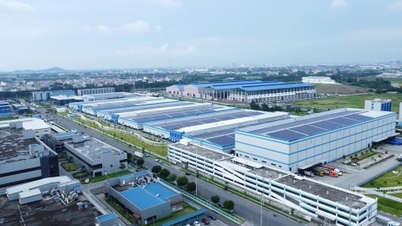














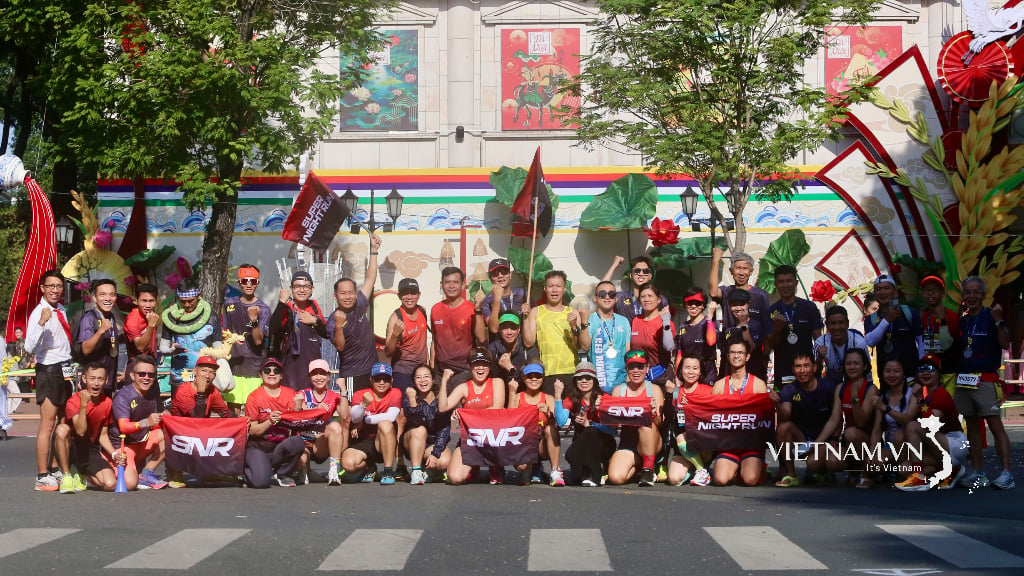
Comment (0)